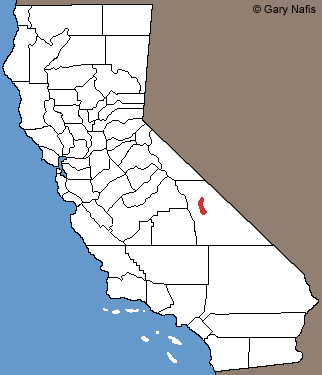 Red: Range in California Red: Range in California
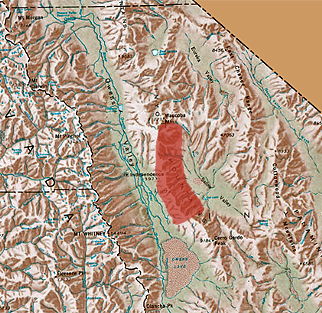 Red
Red: Close-up of Range in Inyo County
|
 |
| Adult, 6,000 ft., Inyo County |
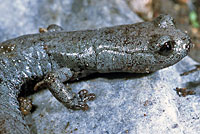 |
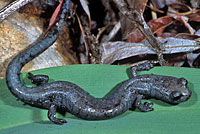 |
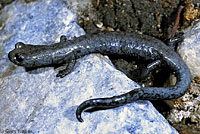 |
| |
Adult, 6,000 ft., Inyo County |
|
 |
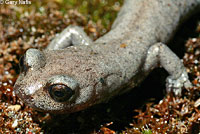 |
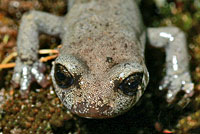 |
| |
Adult, 6,000 ft., Inyo County |
|
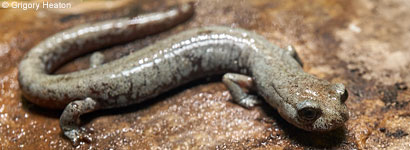 |
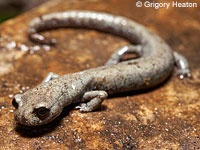 |
| Adult, Inyo County © Grigory Heaton |
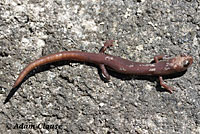 |
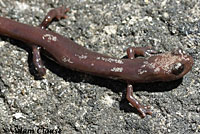 |
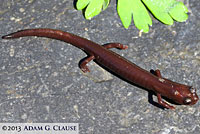 |
| Adult, Inyo County. © Adam Clause. (Animal captured and handled under state Scientific Collecting Permit and released at point of capture.) |
Adult, Inyo County. © Adam Clause. (Animal captured and handled under state Scientific Collecting Permit and released at point of capture.) |
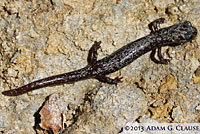 |
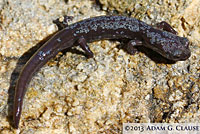 |
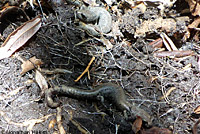 |
| Adult, Inyo County. © Adam Clause. (Animal captured and handled under state Scientific Collecting Permit and released at point of capture.) |
Adult, Inyo County. © Adam Clause. (Animal captured and handled under state Scientific Collecting Permit and released at point of capture.) |
Adults, Inyo County © Jonathan Hakim |
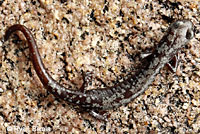 |
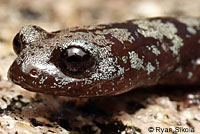 |
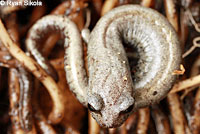 |
| Adult, Inyo County © Ryan Sikola |
Adult, Inyo County © Ryan Sikola |
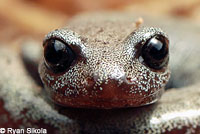 |
 |
| Adult, Inyo County © Ryan Sikola |
Adult and juvenile, Inyo County © Ryan Sikola |
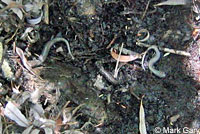 |
 |
|
| Three adult Inyo Mountains Slender Salamanders found together under a rock in July in Inyo County. © Mark Gary |
Slender Salamanders (genus Batrachoseps) have only 4 toes on their hind feet. All other California salamanders have 5 toes on their hind feet. |
|
| |
|
|
| Habitat |
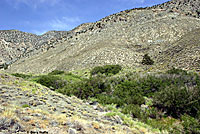 |
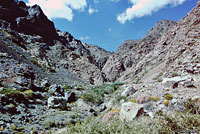 |
 |
Desert Riparian Habitat,
Inyo Mountains, Inyo County
|
Desert Riparian Habitat,
Inyo Mountains, Inyo County
|
Desert Riparian Habitat,
Inyo Mountains, Inyo County
|
| |
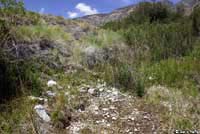 |
|
| |
Desert Riparian Habitat,
Inyo Mountains, Inyo County
|
|
| Description |
| |
| Size |
Adults are 1-1/3 to 2-2/5 inches long (3.2-6.1 mm) from snout to vent.
|
| Appearance |
A small salamander, but large and robust when compared to most Slender Salamanders, with a broad head, rounded snout, large eyes, and 16 - 18 costal grooves.
There are four toes on the front and hind feet, which is typical of all Slender Salamanders. (Other California salamanders have five toes on the hind feet.) |
| Color and Pattern |
Ground color is dark brown, reddish, silvery, or black.
Iridophores speckle the head and anterior body, or form a continuous pattern covering the entire dorsal surface resulting in an overall silvery-green color.
|
| Life History and Behavior |
A member of family Plethodontidae, the Plethodontid or Lungless Salamanders.
Plethodontid salamanders do not breathe through lungs. They conduct respiration through their skin and the tissues lining their mouth. This requires them to live in damp environments on land and to move about on the ground only during times of high humidity. (Plethodontid salamanders native to California do not inhabit streams or bodies of water but they are capable of surviving for a short time if they fall into water.)
Plethodontid salamanders are also distinguished by their nasolabial grooves, which are vertical slits between the nostrils and upper lip that are lined with glands associated with chemoreception.
All Plethodontid Salamanders native to California lay eggs in moist places on land.
The young develop in the egg and hatch directly into a tiny terrestrial salamander with the same body form as an adult.
(They do not hatch in the water and begin their lives as tiny swimming larvae breathing through gills like some other types of salamanders.) |
| Activity |
Nocturnal.
Can be extremely difficult to locate on the surface.
Seasonal activity period is March - November, but salamanders have been observed in December and January.
The moderate temperature and perennial moisture of their riparian habitats create the possibility that this species may be active on the surface year round. |
| Defense |
Slender salamanders use several defense tactics, including:
- Coiling and remaining still, relying on cryptic coloring to avoid detection.
- Uncoiling quickly and springing away repeatedly bouncing over the ground, then remaining still again to avoid detection.
- Detaching the tail, which wriggles on the ground to distract a predator from the salamander long enough for it to escape.
(After its tail is detached or severed, the salamander will grow a new tail.) |
| Diet and Feeding |
| Probably consumes a variety of small invertebrates, using a projectile tongue, as is the case with all other Batrachoseps species. |
| Reproduction |
Reproduction is terrestrial.
Only juvenile and adults of this species have ever been observed. Nests and eggs have not been found.
It is assumed that B.campi undergoes direct development as do the other members of the genus, with females laying eggs in moist places on land and young hatching fully formed.
|
| Habitat |
Inhabits very dry mountain ranges (Death Valley lies just to the south-east) typically in the immediate vicinity of springs, seeps, and their associated riparian growth where there is a small area of suitable habitat surrounded by inhospitable desert terrain. B. campi may be more widely distributed that is currently recognized: they have been found in pitfall traps on a ridge next to rock formations far from surface water, indicating that at high elevations they may not be restricted to riparian areas in canyon bottoms. Although they have been found on both slopes of the Inyo Mountains, they are more widely distributed on the east side. The type locality is also the most southernly: Long John Canyon, 5560 ft. elevation.
|
| Geographical Range |
Endemic to California.
Discovered in 1973 in French Spring and Long John Canyon.
This ancient species of Batrachoseps is confined to about 20 known localities in canyons and springs along a 25 mile (40 km) section of both the Inyo Mountains, Inyo County, California.
13 localities are on the east slope of the Inyo Mountains, and 7 localities are on the west slope. (Herpetological Review 45(2), 2014)
|
| Elevational Range |
Elevational range extends from 1,800 - 8,600 ft. (550 - 2620 m).
|
| Taxonomic Notes |
Officially described in 1979. B. campi belongs to the group of robust slender salamanders. No subspecies are recognized, and very little genetic variation is exhibited throughout it's range. The taxonomic status of this species has not ever been questioned since it was first described in 1979. B. campi's closest known relative is the Kern Plateau slender salamander (B.robustus).
Here's a Diagram of the Batrachoseps Complex showing the relationships between species.
Alternate and Previous Names (Synonyms)
Batrachoseps campi - Inyo Mountain Salamander (Stebbins & McGinnis 2012)
Batrachoseps campi - Inyo Mountains Salamander (Stebbins 1985, 2003)
Batrachoseps campi - (Marlow, Brode & Wake, 1979))
|
| Conservation Issues (Conservation Status) |
This species is currently protected under California law because of its limited and fragile desert riparian habitat.
Water diversion at some sites has degraded habitat. Mining activities near salamander habitats can be a threat to salamander populations. Feral burros and cattle have also degraded habitat at some locations. Natural flash flooding also degrades habitat by removing riparian vegetation. |
|
| Taxonomy |
| Family |
Plethodontidae |
Lungless Salamanders |
Gray, 1850 |
| Genus |
Batrachoseps |
Slender Salamanders |
Bonaparte, 1841 |
| Subgenus |
Plethopsis |
Slender Salamanders |
Bishop, 1937 |
Species
|
campi |
Inyo Mountains Slender Salamander |
Marlow, Brode & Wake, 1979 |
|
Original Description |
Marlow, R. W., J. M. Brode, and D. B. Wake. "A new salamander, genus Batrachoseps, from the Inyo Mountains of California, with a discussion of relationships in the genus." Contributions in Science, Natural History Museum of Los Angeles County #308 1979
|
|
Meaning of the Scientific Name |
Batrachoseps - Greek - batrachos = amphibian, frog + seps = lizard — describes lizard-like appearance
campi - honors Camp, Charles L.
from Scientific and Common Names of the Reptiles and Amphibians of North America - Explained © Ellin Beltz
|
|
Similar Neighboring Salamanders |
Kern Plateau Slender Salamander
Tehachapi Slender Salamander
|
|
More Information and References |
California Department of Fish and Wildlife
AmphibiaWeb
Hansen, Robert W. and Shedd, Jackson D. California Amphibians and Reptiles. (Princeton Field Guides.) Princeton University Press, 2025.
Stebbins, Robert C., and McGinnis, Samuel M. Field Guide to Amphibians and Reptiles of California: Revised Edition (California Natural History Guides) University of California Press, 2012.
Stebbins, Robert C. California Amphibians and Reptiles. The University of California Press, 1972.
Flaxington, William C. Amphibians and Reptiles of California: Field Observations, Distribution, and Natural History. Fieldnotes Press, Anaheim, California, 2021.
Nicholson, K. E. (ed.). 2025. Scientific and Standard English Names of Amphibians and Reptiles of North America North of Mexico, with Comments Regarding Confidence in Our Understanding. Ninth Edition. Society for the Study of Amphibians and Reptiles. [SSAR] 87pp.
Samuel M. McGinnis and Robert C. Stebbins. Peterson Field Guide to Western Reptiles & Amphibians. 4th Edition. Houghton Mifflin Harcourt Publishing Company, 2018.
Stebbins, Robert C. A Field Guide to Western Reptiles and Amphibians. 3rd Edition. Houghton Mifflin Company, 2003.
Behler, John L., and F. Wayne King. The Audubon Society Field Guide to North American Reptiles and Amphibians. Alfred A. Knopf, 1992.
Robert Powell, Roger Conant, and Joseph T. Collins. Peterson Field Guide to Reptiles and Amphibians of Eastern and Central North America. Fourth Edition. Houghton Mifflin Harcourt, 2016.
Powell, Robert., Joseph T. Collins, and Errol D. Hooper Jr. A Key to Amphibians and Reptiles of the Continental United States and Canada. The University Press of Kansas, 1998.
American Museum of Natural History - Amphibian Species of the World 6.2
Bartlett, R. D. & Patricia P. Bartlett. Guide and Reference to the Amphibians of Western North America (North of Mexico) and Hawaii. University Press of Florida, 2009.
Bishop, Sherman C. Handbook of Salamanders. Cornell University Press, 1943.
Lannoo, Michael (Editor). Amphibian Declines: The Conservation Status of United States Species. University of California Press, June 2005.
Petranka, James W. Salamanders of the United States and Canada. Smithsonian Institution, 1998.
|
|
|
The following conservation status listings for this animal are taken from the April 2024 State of California Special Animals List and the April 2024 Federally Listed Endangered and Threatened Animals of California list (unless indicated otherwise below.) Both lists are produced by multiple agencies every year, and sometimes more than once per year, so the conservation status listing information found below might not be from the most recent lists. To make sure you are seeing the most recent listings, go to this California Department of Fish and Wildlife web page where you can search for and download both lists:
https://www.wildlife.ca.gov/Data/CNDDB/Plants-and-Animals.
A detailed explanation of the meaning of the status listing symbols can be found at the beginning of the two lists. For quick reference, I have included them on my Special Status Information page.
If no status is listed here, the animal is not included on either list. This most likely indicates that there are no serious conservation concerns for the animal. To find out more about an animal's status you can also go to the NatureServe and IUCN websites to check their rankings.
Check the current California Department of Fish and Wildlife sport fishing regulations to find out if this animal can be legally pursued and handled or collected with possession of a current fishing license. You can also look at the summary of the sport fishing regulations as they apply only to reptiles and amphibians that has been made for this website.
|
| Organization |
Status Listing |
Notes |
| NatureServe Global Ranking |
G3 |
Vulnerable—At moderate risk of extinction due to a restricted range, relatively few populations (often 80 or fewer), recent and widespread declines, or other factors.
|
| NatureServe State Ranking |
S3 |
Vulnerable in the state due to a restricted range, relatively few populations (often 80 or fewer), recent and widespread declines, or other factors making it vulnerable to extirpation from the state.
|
| U.S. Endangered Species Act (ESA) |
None |
|
| California Endangered Species Act (CESA) |
None |
|
| California Department of Fish and Wildlife |
SSC |
California Species of Special Concern |
| Bureau of Land Management |
S |
Sensitive |
| USDA Forest Service |
S |
Sensitive |
| IUCN |
EN |
Endangered |
|
|
|





























